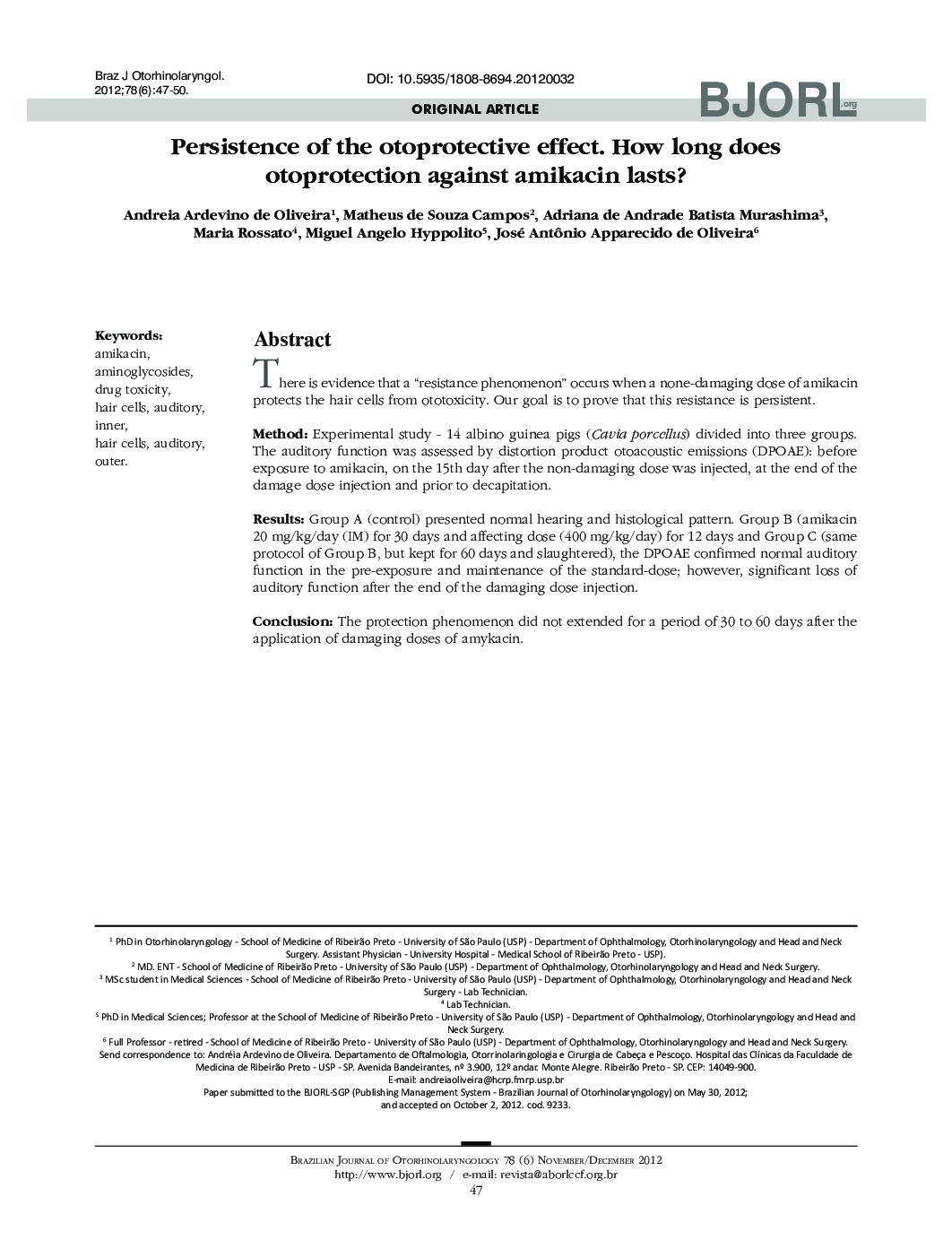| کد مقاله | کد نشریه | سال انتشار | مقاله انگلیسی | نسخه تمام متن |
|---|---|---|---|---|
| 4107053 | 1605383 | 2012 | 4 صفحه PDF | دانلود رایگان |

There is evidence that a “resistance phenomenon” occurs when a none-damaging dose of amikacin protects the hair cells from ototoxicity. Our goal is to prove that this resistance is persistent.MethodExperimental study - 14 albino guinea pigs (Cavia porcellus) divided into three groups. The auditory function was assessed by distortion product otoacoustic emissions (DPOAE): before exposure to amikacin, on the 15th day after the non-damaging dose was injected, at the end of the damage dose injection and prior to decapitation.ResultsGroup A (control) presented normal hearing and histological pattern. Group B (amikacin 20 mg/kg/day (IM) for 30 days and affecting dose (400 mg/kg/day) for 12 days and Group C (same protocol of Group B, but kept for 60 days and slaughtered), the DPOAE confirmed normal auditory function in the pre-exposure and maintenance of the standard-dose; however, significant loss of auditory function after the end of the damaging dose injection.ConclusionThe protection phenomenon did not extended for a period of 30 to 60 days after the application of damaging doses of amykacin.
Journal: Brazilian Journal of Otorhinolaryngology - Volume 78, Issue 6, November–December 2012, Pages 47–50